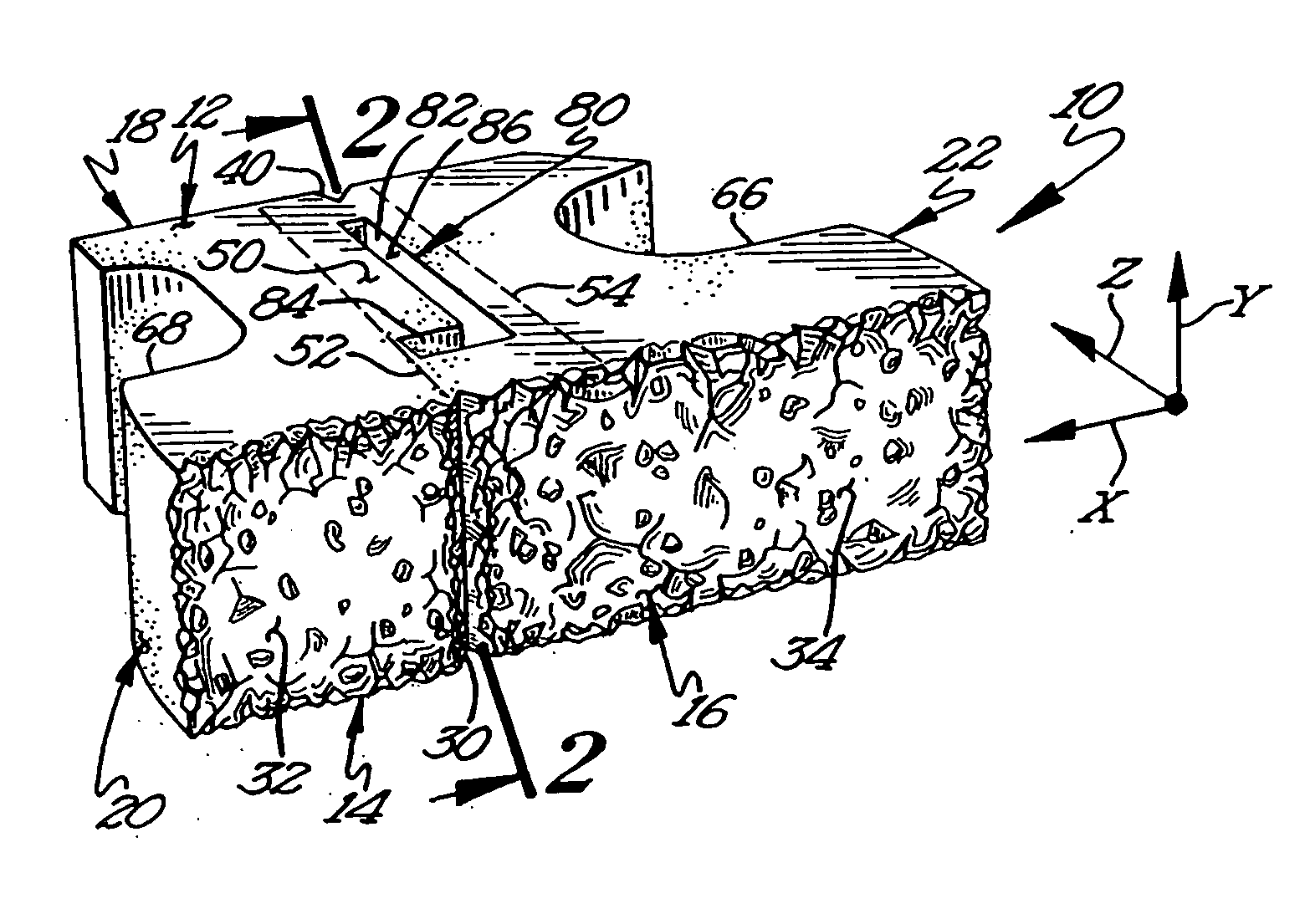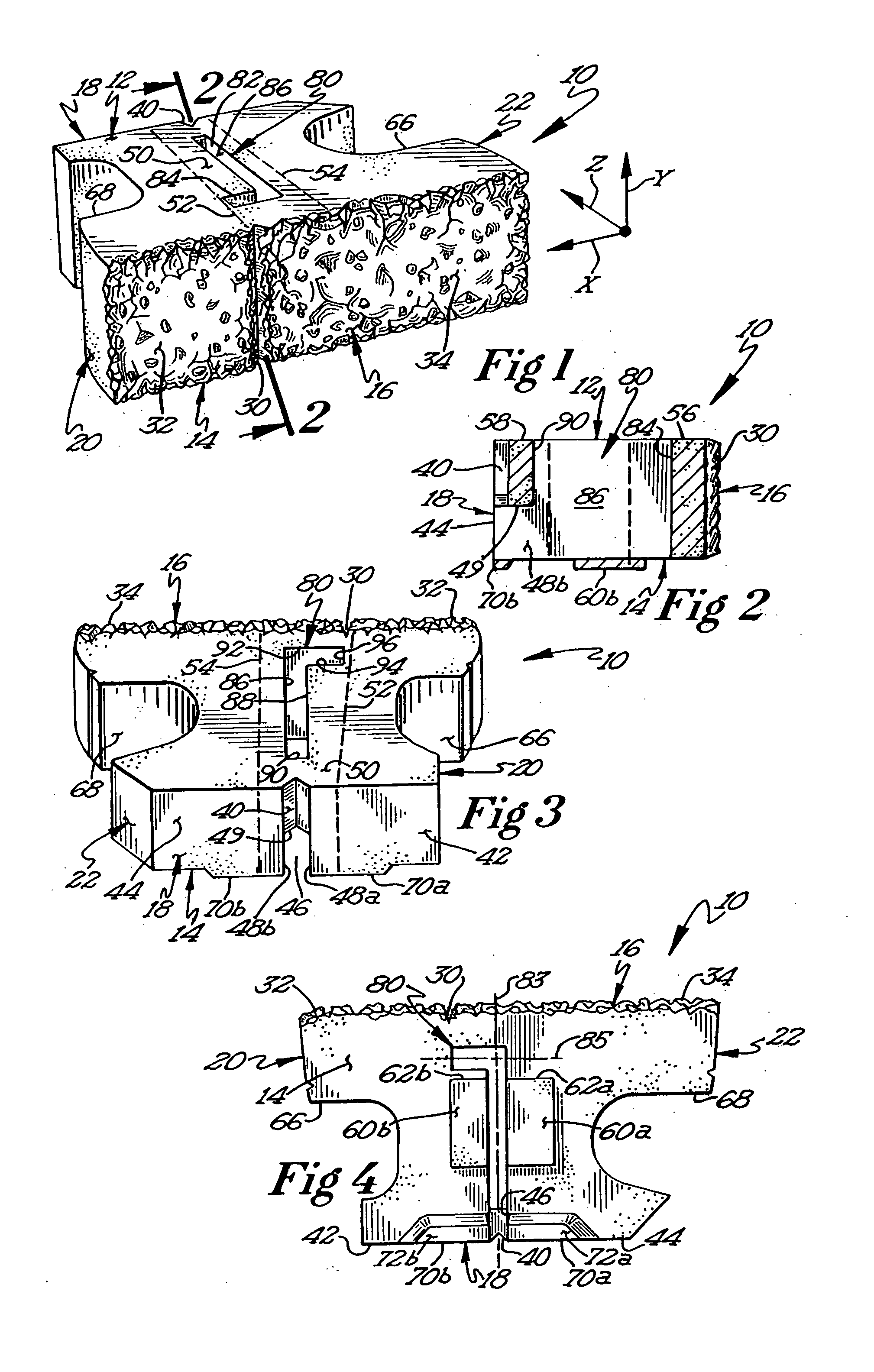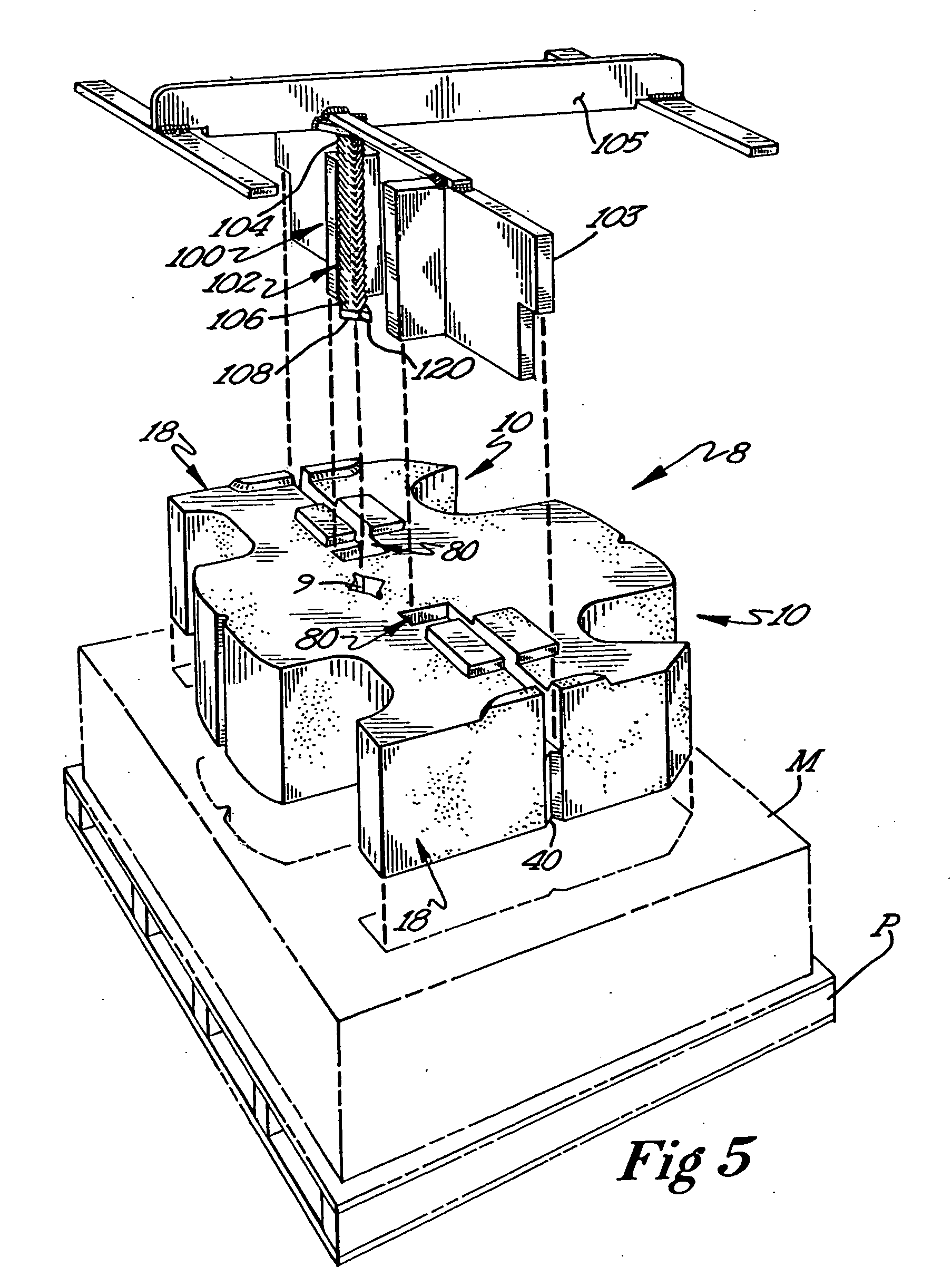Asymmetric retaining wall block
a technology of retaining walls and blocks, applied in the field of walls, can solve the problems of not being able to subdivide such blocks, certain types of constructions are possible, and the construction of retaining walls is labor-intensive, and achieve the effect of facilitating the splitting of blocks
- Summary
- Abstract
- Description
- Claims
- Application Information
AI Technical Summary
Benefits of technology
Problems solved by technology
Method used
Image
Examples
Embodiment Construction
[0026] Turning to the figures wherein like parts are designated with like numerals throughout several views, the directions vertical and horizontal as used herein are made with reference to blocks in their normal position of use, eg. as in a wall, and wherein the dimensions of height, width, and depth correspond to the x, y, and z axes in a three dimensional coordinate system. With reference to FIG. 1 a preferred embodiment of a wall block 10 comprising a top surface 12, a bottom surface 14, a front surface 16, a rear surface 18 (see, FIGS. 2, 3, and 4), and first and second side surfaces 20, 22, respectively, is disclosed. The front surface 16, as depicted, includes a first groove 30 that extends vertically between the top and bottom surfaces, 12 and 14. The first groove 30 simulates a joint that is normally formed between the sides of adjacent blocks in a course of blocks. In forming the simulated joint, the first groove 30 divides the front surface or facing into two panels 32 an...
PUM
| Property | Measurement | Unit |
|---|---|---|
| distance | aaaaa | aaaaa |
| distance | aaaaa | aaaaa |
| distance | aaaaa | aaaaa |
Abstract
Description
Claims
Application Information
 Login to View More
Login to View More - Generate Ideas
- Intellectual Property
- Life Sciences
- Materials
- Tech Scout
- Unparalleled Data Quality
- Higher Quality Content
- 60% Fewer Hallucinations
Browse by: Latest US Patents, China's latest patents, Technical Efficacy Thesaurus, Application Domain, Technology Topic, Popular Technical Reports.
© 2025 PatSnap. All rights reserved.Legal|Privacy policy|Modern Slavery Act Transparency Statement|Sitemap|About US| Contact US: help@patsnap.com



